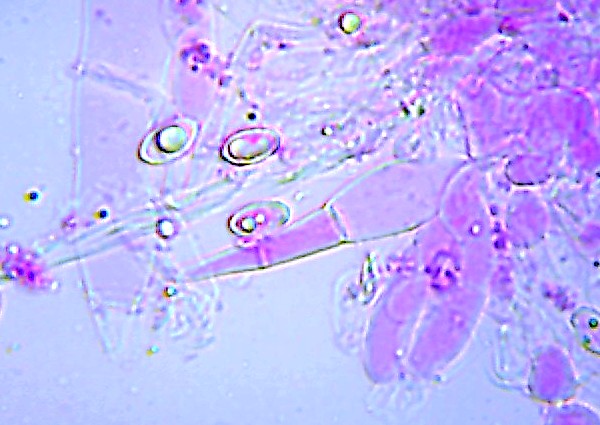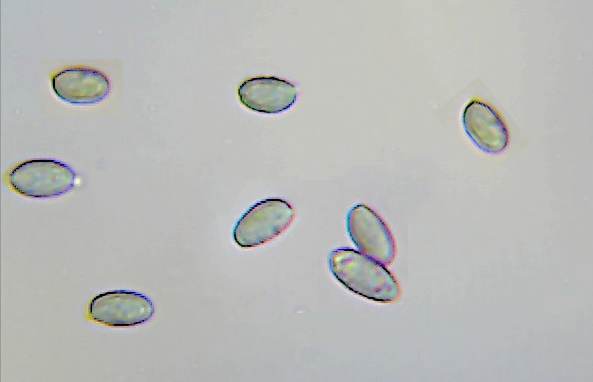Melanoleuca verrucipes (Fr.) Singer - Warty Cavalier
Phylum: Basidiomycota - Class: Agaricomycetes - Order: Agaricales - Family: Tricholomataceae
Distribution - Taxonomic History - Etymology - Identification - Culinary Notes - Reference Sources

Most Melanoleuca (Cavalier) species are very tricky to identify from macroscopic features alone; however, the Warty Cavalier is a notable exception. The blackish punctate scales on the stem of this mushroom readily distinguishes it from others in this difficult genus.
Distribution
A rare to occasional find in Britain, where it was first recorded in 2000, Melanoleuca verrucipes is found most often in the south of England and is much less common further north. This lovely mushroom is also found in northern and central mainland Europe and is reported from North America, where it occurs on woodchip mulch. It seems to me very likely that the world distribution of this species has expanded greatly in recent years due to its transfer in exported pot plants, potting compost and woodchip garden mulch!
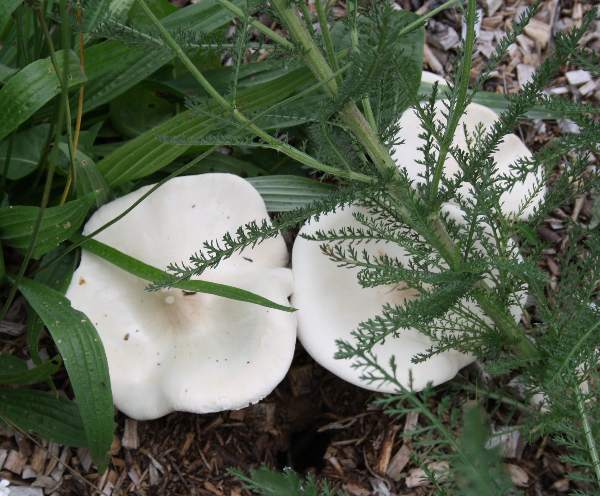
Taxonomic history
The Warty Cavalier was described in 1874 by Swedish mycologist Elias Magnus Fries, who gave it the name Agaricus verrucipes. Its currently accepted scientific name Melanoleuca verrucipes dates from a 1939 publication by Rolf Singer.
Synonyms of Melanoleuca verrucipes include Agaricus verrucipes Fr., Agaricus adsentiens P. Karst., Armillaria verrucipes Fr., Clitocybe adsentiens (P. Karst.) P. Karst., Gyrophila verrucipes (Fr.) Quel., Mastoleucomyces verrucipes (Fr.) Kuntze, and Tricholoma verrucipes (Fr.) Bres.
Etymology
The genus name Melanoleuca comes from the Ancient Greek words melas meaning black, and leucos meaning white. No cavalier mushroom is truly black and white, but many have caps whose upper surfaces are various shades of brown, with whitish gills beneath.
The specific epithet verrucipes literally means 'with warty foot', and for foot read stem when referring to a mushroom, of course.
Identification guide
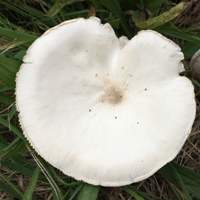 |
CapVarying from white to cream with a pale brown centre, the cap is initially convex and then flattens with a small low umbo; the cap surface sometimes breaks into low scales; 3 to 10cm across when fully expanded. The cap flesh is white to very pale cream. |
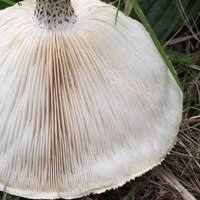 |
GillsEmarginate to adnate, crowded; white to pale cream. |
 |
Stem3.5-6cm long and 0.5-2cm in diameter, cylindrical often with a swollen or clavate base; punctate with clearly delineated dark brown to black scales; no stem ring. |
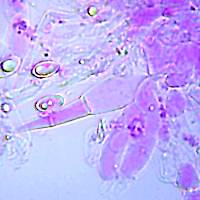 |
CheilocystidiaThin-walled, narrowly urticoid, 30-60 x 9-11μm; often encrusted with crystals at the apex. |
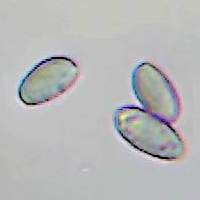 |
SporesEllipsoidal to oblong, finely warty, 8-10.5 x 5.5-6μm; amyloid. Spore printWhite to pale cream. |
Odour/taste |
Odour faint, of aniseed or of almonds; taste mild, not distinctive. |
Habitat & Ecological role |
Saprobic, on humus-rich soil and leaf-litter-rich grassland, woodchip or garden compost heaps. |
Season |
The Warty Cavalier usually appears in late summer and autumn, but occasionally specimens are found in springtime. |
Similar species |
Melanoleuca melaleuca is macroscopically very similar, but it lacks the distinctive dark brown scales on thye stem. More than thirty species in the Melanoleuca genus are recorded from Britain and Ireland, and most have pale to mid brown caps and whitish gills; separating them is a task for specialists. (Many of them are very rare finds.) |
Culinary Notes
Some of the so-called 'cavalier' fungi are reported to be edible but nothing special; however, as these kinds of mushrooms are notoriously difficult to identify I recommend that they should all be considered suspect and not collected for food.
Reference Sources
Fascinated by Fungi, 2nd Edition, Pat O'Reilly 2016, reprinted by Coch-y-bonddu Books in 2022.
Dictionary of the Fungi; Paul M. Kirk, Paul F. Cannon, David W. Minter and J. A. Stalpers; CABI, 2008
Taxonomic history and synonym information on these pages is drawn from many sources but in particular from the British Mycological Society's GB Checklist of Fungi.
Acknowledgements
This page includes pictures kindly contributed by Simon Harding.
Fascinated by Fungi. Back by popular demand, Pat O'Reilly's best-selling 450-page hardback book is available now. The latest second edition was republished with a sparkling new cover design in September 2022 by Coch-y-Bonddu Books. Full details and copies are available from the publisher's online bookshop...
